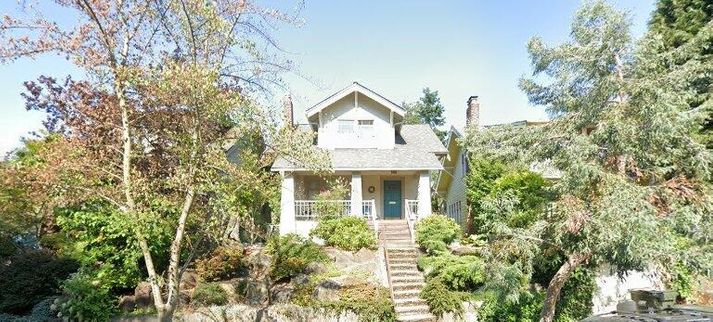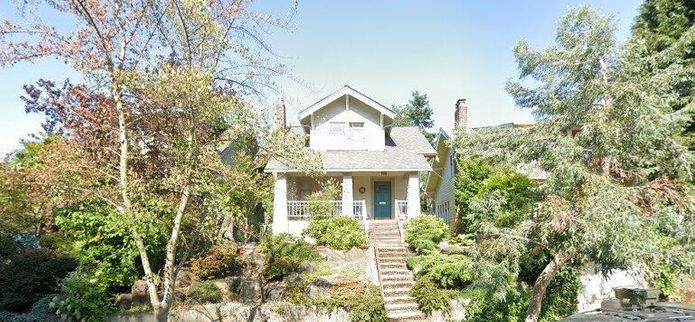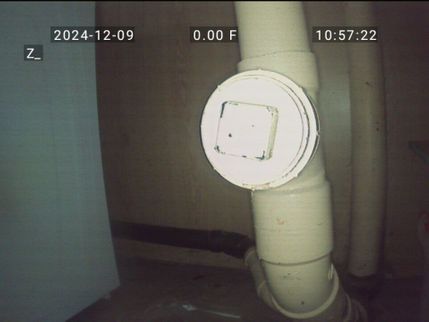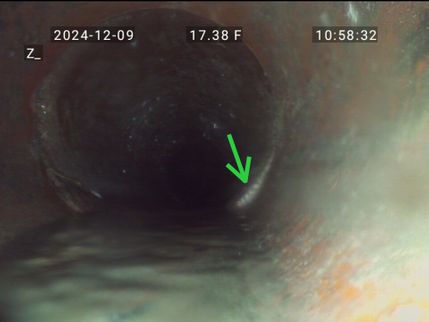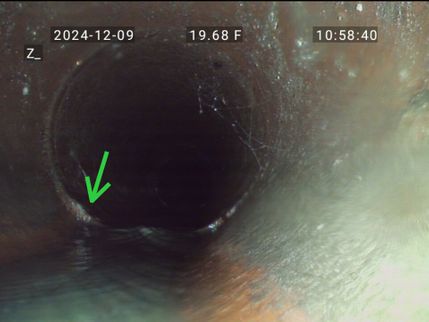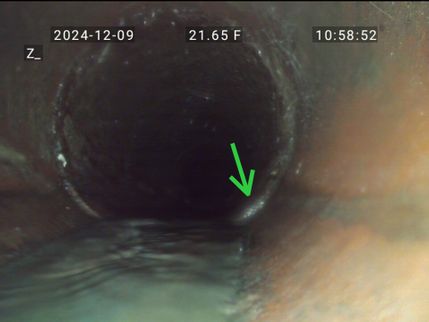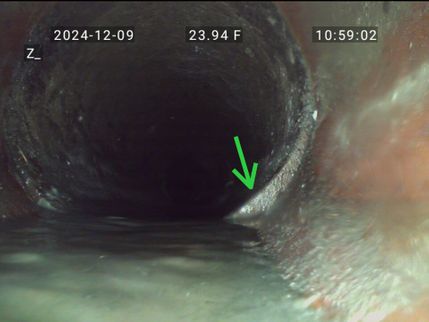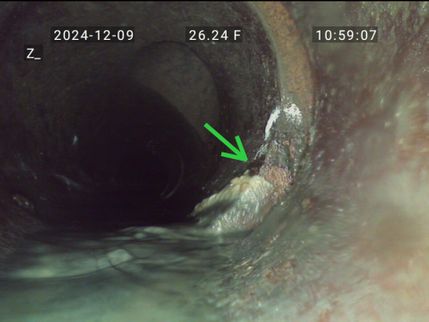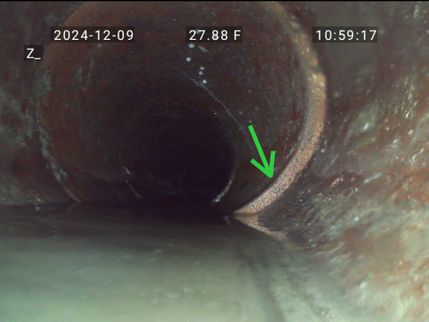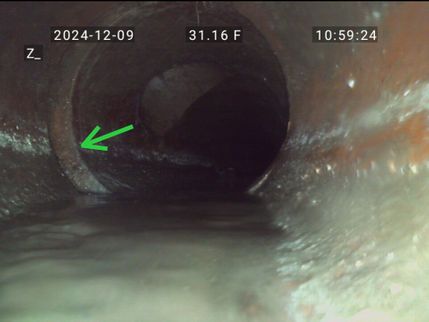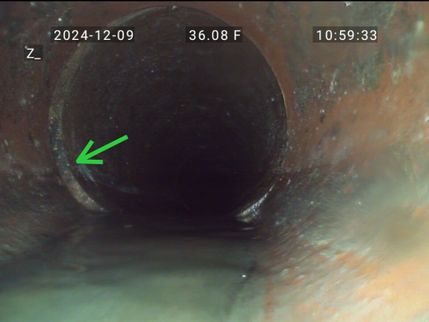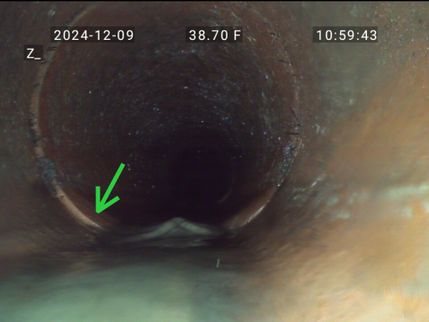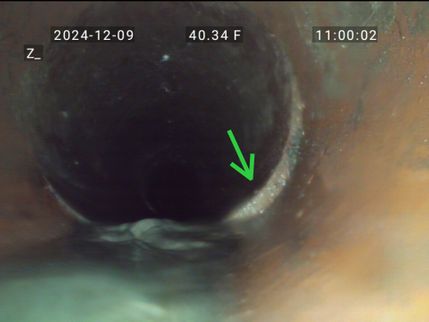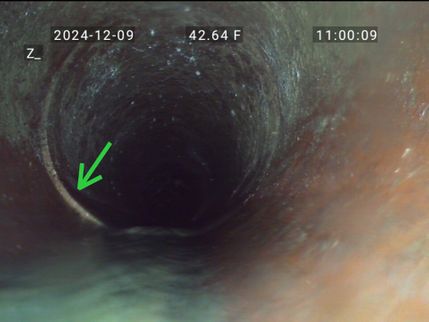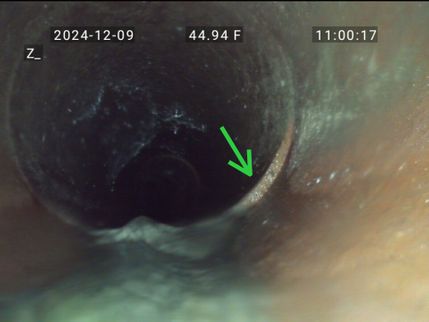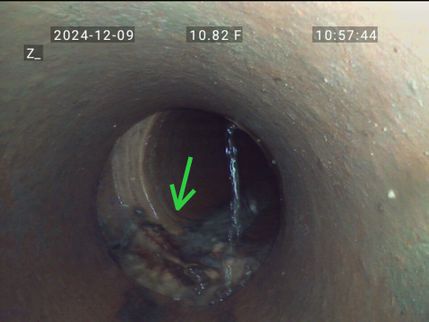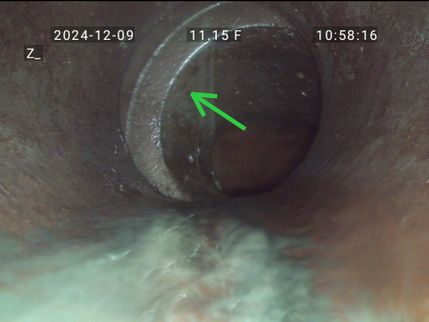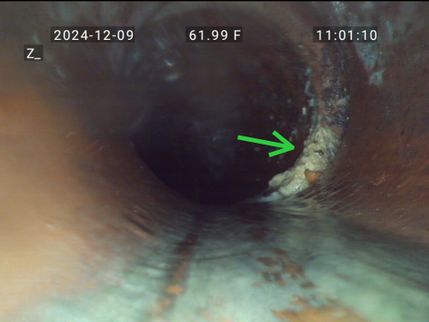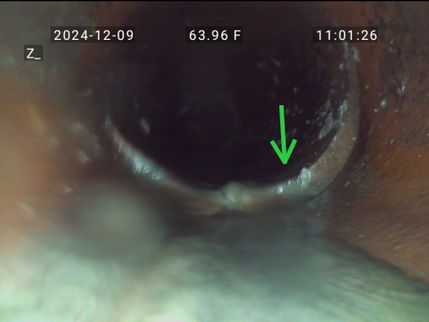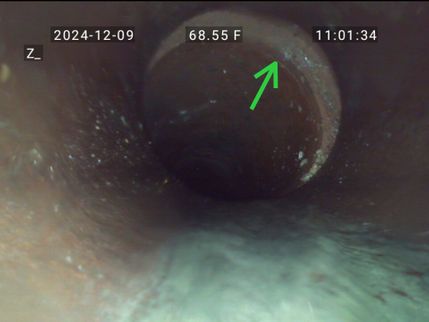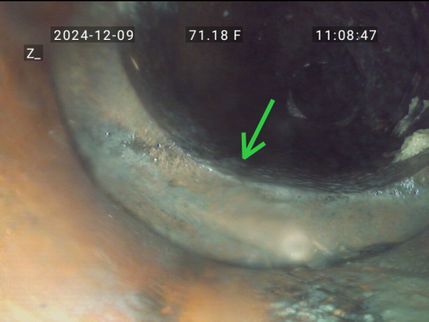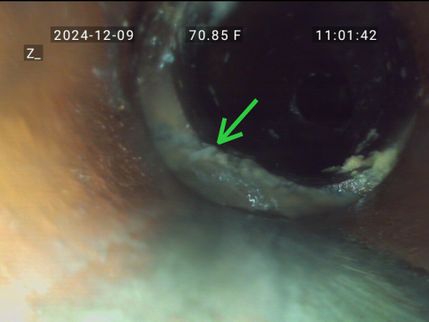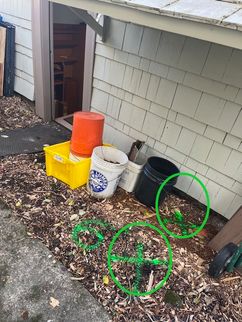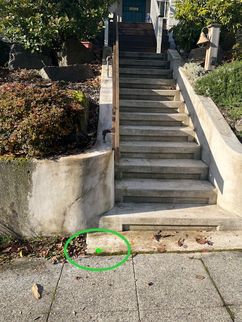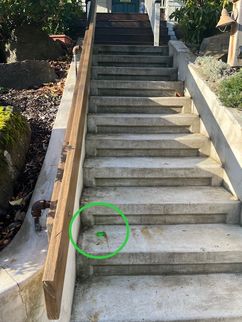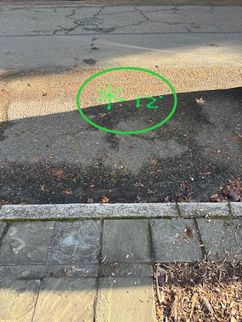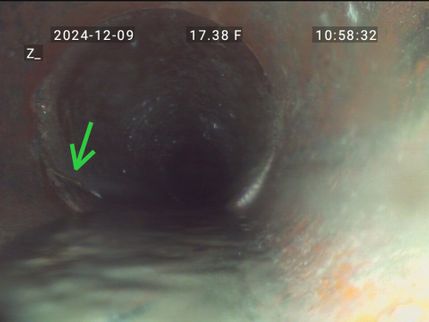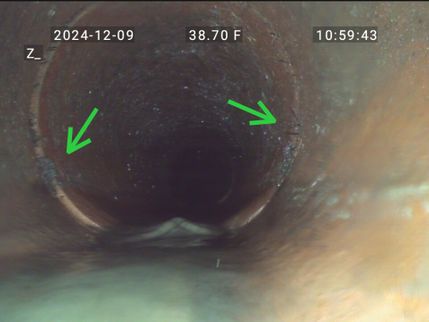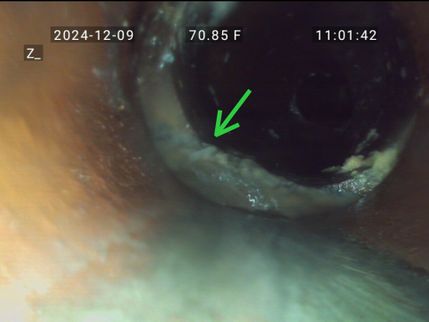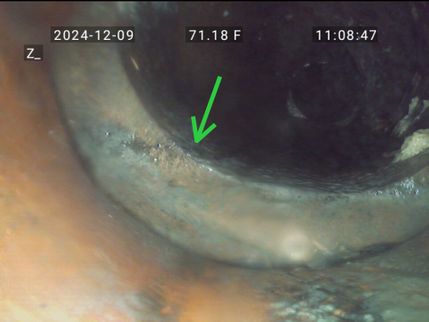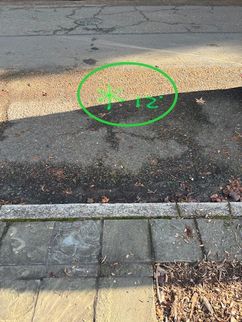The Scope and Purpose of a Sewer Scope
Video pipeline inspections are performed using specific camera equipment designed to evaluate the condition of below-ground piping systems. These inspections are designed to evaluate the condition of subsurface pipes and identify any areas in need of maintenance or repair or any materials that are deficient or sub-standard. The scope of this report is only what is shown here and includes only the parts of the pipe that were accessible to camera inspection.
How to Read This Report
Getting the Information to You
The best way to get the information that is presented in this report is to read your report online (the HTML version), which will allow you to stream the pipeline video as well as read narrative comments and see any still photos that have been presented as part of this inspection.
For the most reliable viewing experience, I recommend viewing the report on as large a screen as practical, as much detail can be lost on small devices like smartphones. For similar reasons, reports should only be printed in color to retain as much detail as possible and minimize misinterpretation of photographs.
This report can also be printed on paper or to a PDF document
Observation Labels
All narrative observations are colored, numbered and labeled to help you find, refer to, and understand the severity of the observation. Observation colors and labels used in this report are:
- Repair:Repair and maintenance items noted during inspection. Please note that some repair items can be expensive to correct such as re-finishing hardwood floors, but are considered simply repair items due to their cosmetic nature.
- Description:Detailed description of various aspects of the property noted during the inspection.
The Full Report
Inspection Information
Inspection Information
Information: Information
All comments and observations made by the inspector should be considered, and actions taken before closing escrow. This includes any recommendation to employ a professional plumber to evaluate further any anomalous findings noted during this inspection. All recommendations for repair, replacement, remediation of limitations, and any follow-up re-inspection should be considered and actions taken before closing escrow. Your best interests are your inspector's primary concern; however, your inspector is not an expert, licensed plumber. A qualified, experienced professional plumber can provide options, insights, and unknown cost estimates to your inspector. Before closing escrow, all costs associated with further inspection fees and the repair or replacement of any component should be considered.
NOTE ABOUT SMOKE TESTING:
It is important to know that sanitary sewer utility providers conduct routine smoke testing of the sanitary sewer systems within their domain. Smoke testing reveals deficiencies within the main system, the side sewer systems feeding into the main, and the drain, waste, and vent systems within the structure. Smoke testing can identify deficiencies that are potentially harmful to you and those that are potentially harmful to the overall sewer system. (The smoke is non-toxic to you, your pets, and your house plants.) The utility company can mandate you repair, at your expense, deficient systems within the side sewer serving this property as a condition of continued service. If this sewer scope inspection reveals any deficiency, it is important to understand the future ramifications of deferring a repair that may be identified during utility company smoke testing.
Sewer Inspection Report
Access Point
Side Sewer Type (Public/On-Site)
Side Sewer Type: Public Sewer System
Public Sewer System
PUBLIC SEWER SYSTEM
The side sewer serving this property is connected to a public sewer system.
Scope Findings
PIPE MATERIAL(S): PIPE MATERIAL(S)
PIPE MATERIAL(S)
PIPE MATERIAL(S)
I noted the presence of the following type(s) of pipe material(s): The materials are listed below in the order that I encountered them, moving from the point of access toward the main sewer line.
*Side Sewer Pipe Materials*
- Plastic
- Cast Iron
- Clay
ROOT INTRUSION: Minor
Minor
OFFSET JOINTS: Minor
Minor Moderate
Moderate Severe
Severe
MINOR OFFSET
The offset joints seen during your sewer scope inspection are MINOR and are located at several joints throughout the side sewer. Minor offsets are unlikely to cause a debris buildup and typically don’t cause any negative effect on the sewer. Corrective action is not normally required.
Side sewers are built using multiple pipe segments connected at joints. Offset joints occur when the pipes don’t perfectly match up, and one of the pipes sits lower or off to the side of the connecting pipe.
Offset joints can cause debris to build up on the joint, eventually leading to backups. Additionally, an offset is a location where roots can easily grow into the sewer line. Also, suppose the joint is offset enough that soil is exposed around the edges of the pipes. In that case, the surrounding soil can erode into the pipe and be washed away, eventually causing voids around the outside and possibly becoming sinkholes. Offset joints are not watertight and can allow infiltration of clean groundwater into the wastewater sewer system.
MODERATE OFFSET
The offset joint(s) seen during your sewer scope inspection are MODERATE and are located 10,11,61,63,68 and 71 feet from the access point. Moderate offsets may cause some buildup of debris but typically would not cause a backup. I do not see any exposed soil at the noted offset(s). I recommend further evaluation by a qualified licensed sewer plumbing contractor and correction as recommended. This work should be completed before the close of escrow.
Side sewers are built using multiple pipe segments connected at joints. Offset joints occur when the pipes don’t perfectly match up, and one of the pipes sits lower or off to the side of the connecting pipe.
Offset joints can cause debris to build up on the joint, eventually leading to backups. Additionally, an offset is a location where roots can easily grow into the sewer line. Also, suppose the joint is offset enough that soil is exposed around the edges of the pipes. In that case, the surrounding soil can erode into the pipe and be washed away, eventually causing voids around the outside and possibly becoming sinkholes. Offset joints are not watertight and can allow infiltration of clean groundwater into the wastewater sewer system.
MINOR ROOT INTRUSION
The root intrusion seen during your sewer scope inspection is MINOR, and it is located 17 and 38 feet from the access point. Root intrusion is considered minor if less than 25 percent of the pipe is obstructed. Typically, minor root intrusions will not have an impact on the function of the side sewer. However, roots may increase in size and severity over time. Minor root growth may be treated with a commercially available sewer root control product such as Root-X or mechanically removed using a rotary cutter. Whether treated or not, the side sewer should be re-inspected in 3 to 5 years to determine if the roots have increased in size and severity.
Roots are another common problem within side sewers, especially older concrete and clay pipe side sewers that weren’t constructed with watertight joints. Once roots seek a water source in sewer pipes, they thrive and grow. This results in cracked pipes and sewer backups when debris isn’t able to pass through the roots. Pipes cracked from roots should be repaired in a manner that doesn’t allow the roots to grow back into the sewer system. Roots coming into joints that aren’t cracked may be routinely removed by cleaning the sewer pipes. The frequency of removal will depend on how aggressive the root growth is. The only way to permanently remove roots from a side sewer is to construct a watertight sewer pipe either through replacement or rehabilitation.
OFFSET RESTRICTED PROGRESS
Due to the moderate offset in the sewer line, I could not pass the camera all the way to the sewer main. My camera progress was stopped at 71 feet from the point of access. The remaining section of the side sewer has not been inspected. The installation of clean-out access, at or just beyond the location where progress was stopped, would be needed to facilitate the inspection of the remainder of the side sewer. I recommend further evaluation and correction as needed. A qualified licensed plumbing contractor should complete this work before closing escrow.
Videos
VIDEO: Video
SEWER SCOPE VIDEO LINK
Here are the video and audio recorded during your sewer scope inspection. Please get in touch with our office if you have any questions or need assistance viewing the video.
The Sterling Inspection Group Inc
253-841-1128
info@sterlinginspections.com
Common Side Sewer Repair Processes
Common Side Sewer Repair Processes
Repair Description: Description
Construction Methods to Eliminate Defects in Side Sewers
This section describes various methods available for repairing, replacing, or rehabilitating an existing side sewer. Every side sewer is unique and not all methods are suitable for all circumstances. It is always important to work with a sewer contractor experienced with the particular kind of construction to determine the suitability for each side sewer on an individual basis and to obtain cost estimates for the various methods as they may vary greatly for each project.
Open cut construction
This method of construction is the typical dig and replace that most people are familiar with. This is the most common method of repairing side sewers and consists of digging up the old pipe and replacing it with new pipe. Open cut may be less suitable for areas where there are significant surface improvements that a property owner wants to avoid disturbing and that are costly to replace or when side sewers are fairly deep.
Pipe bursting
This method of construction consists of inserting a new flexible pipe into the old pipe. This method requires digging an installation pit and a receiving pit at each end of the side sewer to allow for the pipe to be inserted and to make final connections at each end. This method is beneficial for sites where there are surface improvements that an owner either chooses not to disturb or that would be expensive to replace. Pipe bursting is not suitable for pipes that are no longer round enough to allow for the bursting machine to penetrate, in pipes with multiple bends, or in pipes that need to have sags corrected as the new pipe will follow the vertical alignment of the old pipe.
Cured In Place Pipe (CIPP) lining
CIPP consists of rehabilitating an existing pipe with a new pipe. A resin-soaked felt tube liner is inserted into the existing pipe, inflated to expand to the shape of the existing pipe, and then cured until the resin hardens to form a pipe within the old pipe. CIPP is also beneficial for sites where there are surface improvements than an owner either chooses not to disturb or that would be expensive to replace. The liner can be inserted through cleanouts in the side sewer and requires no other digging unless needed to install a cleanout. Since CIPP forms to the shape of the existing pipe it is not suitable for pipes that are collapsing or egg-shaped, nor can it be installed in pipes with multiple bends or in pipes that need to have sags corrected as the new pipe will follow the vertical alignment of the old pipe.
Spot repairs
If the majority of a pipe is good condition with little or no defects, a spot repair may be the most suitable and cost effective method for repair. The property owner should consider a full side sewer replacement or rehabilitation if there are multiple defects throughout the pipe. It is generally less costly to hire a contractor once than to have a contractor mobilize to a site multiple times with repeated spot repairs.
.jpg)
